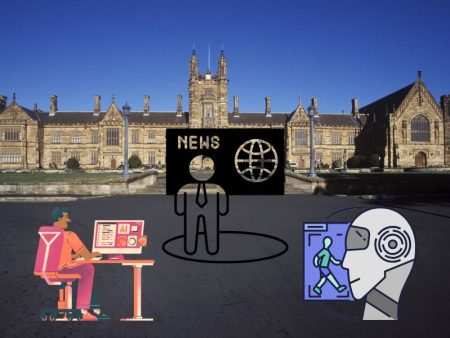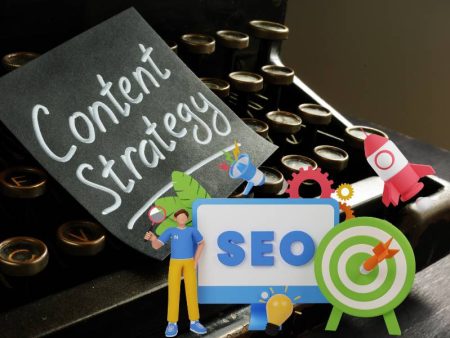Okay, let me ask you something real quick.
Have you ever opened your inbox and just… stared? Like, really stared. The kind of stare where your brain just flatlines for a second because everything in front of you looks equally unimportant and overwhelming?
Yeah. Same.
If you’re running a business or managing a bunch of email campaigns, you know the pain. Segmenting contacts, sorting replies, tagging based on behavior, updating lists—it’s like folding laundry that keeps multiplying while your back is turned.
But here’s the good news. AI just pulled up a chair and said, “Hey, mind if I handle that for you?”
And honestly? It’s about time.
So, let’s talk about how AI is transforming email segmentation—not just by making it faster, but by making it actually work.
The Nightmare That Is Manual Segmentation
Let’s take a walk down memory lane.
Picture this: It’s 11 PM. You’re exhausted. You promised yourself you’d stop working after dinner, but here you are, manually sorting through hundreds of email sign-ups to tag people who clicked a specific link.
You’re filtering spreadsheets like a gremlin. You’ve got tabs open, your coffee’s cold, and you just accidentally tagged “inactive leads” as “VIP clients.”
We’ve all been there.
Manual segmentation used to be the only way to create targeted email lists. But let’s face it—it’s soul-sucking work. Necessary? Sure. Sustainable? Not even close.
This is where AI steps in like your super-organized best friend with color-coded folders and zero tolerance for digital clutter.
But Wait—What Is Email Segmentation, Really?
Just so we’re on the same page: email segmentation is the process of dividing your email list into smaller, meaningful groups based on certain criteria—like behavior, location, engagement, purchase history, or how often they ghost your emails (hey, it happens).
And when you get it right? It’s magic.
Segmented campaigns have higher open rates, more engagement, and they just feel better. More personal. Less spammy. More like a friend saying, “Hey, I thought you’d like this,” rather than a robot yelling “BUY NOW” into your inbox.
Enter AI: The Inbox Whisperer
Now imagine if your email system could:
- Watch how subscribers behave
- Automatically group them based on interests
- React to their engagement in real time
- Update those segments constantly without you lifting a finger
That’s not wishful thinking. That’s literally what AI does.
Tools like an AI Email Organizer have changed the game. They don’t just sort emails—they understand them.
I’m talking about next-level automation that digs into metadata, analyzes open/click behavior, and segments your contacts based on predictive insights. Not just “clicked link A,” but “this person has a 75% likelihood of responding to a product demo next week.”
Wild, right?
Real Talk: You’re Probably Doing Too Much
Can I just say something you probably need to hear?
You don’t need to do all the segmentation manually anymore.
There. I said it.
I know we like control. I know we like making sure things are “just right.” But trying to personally monitor subscriber behavior across campaigns is like trying to track every single squirrel in a forest. Exhausting. And unnecessary.
AI doesn’t get tired. It doesn’t miss a lead. It doesn’t accidentally forget to tag someone who clicked “Download Guide” on your landing page. It’s there, behind the scenes, watching. Learning. Sorting. Optimizing.
And it’s doing it better than we ever could.
You + AI = Inbox Zen
Let’s talk about the actual vibe when AI is running your segmentation.
Instead of logging into your CRM and seeing a giant mess, you see something that feels… peaceful. Like an inbox retreat. Everything is organized. Segments are updated. Campaigns are scheduled to hit at the right time (hey, we covered that in another post).
You can focus on content. On strategy. On actual human connection.
Meanwhile, your AI email system is quietly back there, moving contacts around like a digital Marie Kondo. No drama. No caffeine. Just results.
Let’s Get Specific: Gmail and Outlook Users, Listen Up
Okay, so if you’re using Gmail for work, you have to check out this AI Email Organizer Gmail. It’s tailored for the Gmail ecosystem, which means it doesn’t just work—it flows.
You get automated labels, priority filters, contact grouping—all without having to set 100 filters manually or build confusing scripts. Honestly, it’s like having a very patient, very smart assistant who’s way better at this than you are.
And if you’re an Outlook person? (We still love you, don’t worry.)
There’s a version made just for you: AI Email Organizer Outlook. It integrates smoothly, works with Outlook’s native folder structure, and keeps everything from getting out of hand. Finally, Outlook starts acting like it actually belongs in 2025.
The Human Touch Still Matters—Just Not Everywhere
Here’s something I believe in deeply: automation should never take away the human element—it should protect it.
AI doesn’t replace you. It creates space for you to show up more you-fully. (Yeah, I made that word up.)
Because when AI handles the segmentation, you’re freed up to write better emails. To come up with campaigns that actually connect. To write that weird, funny, heartfelt welcome message that makes someone smile.
AI handles the sorting.
You handle the storytelling.
And that? That’s the dream team.
Mistakes We’ve All Made (Yes, Even Me)
Let’s pause for a confession.
One time, early in my marketing life, I sent a Valentine’s promo… to my “disengaged leads” list. 💔
Not only did it flop, but I got two unsubscribe replies that said, “Why am I getting this?”
Valid question, Greg. I had no answer.
Had I used AI-based segmentation, those disengaged folks would’ve been quietly removed, and my romantic marketing masterpiece would’ve gone to the folks who actually cared.
We live. We learn. We automate.
Looking Ahead: Predictive Segmentation
This part gives me goosebumps. AI isn’t just looking at what’s happened—it’s predicting what’s next.
Let that sink in.
Your system can look at a user’s current activity and say, “Hey, based on their behavior, they’re probably going to churn in a few days… or buy something in the next week.”
It builds smart segments based on probability, not just past clicks. That’s where things are going. And honestly? I’m here for it.
It means smarter campaigns. Better timing. Less wasted effort. And hopefully? Fewer unsubscribes from confused Gregs.
Final Thought: Give Yourself a Break
If you’re reading this thinking, “Wow, I’m behind,” stop.
You’re not behind. You’re evolving.
We all start somewhere. What matters is that you’re paying attention, asking questions, and finding better ways to work smarter—not harder.
AI segmentation isn’t just for the giant corporations or tech nerds in hoodies. It’s for anyone who’s sick of living in their inbox and ready to do things differently.
So, if you’ve been drowning in contact lists, frantically sorting and tagging and trying to remember who clicked what and when—take a deep breath.
And let AI handle the heavy lifting.
You’ve got better things to do.
TL;DR (For the Skimmers in the Back):
- Manual email segmentation is exhausting and inefficient
- AI can sort, tag, and update your email segments in real-time
- Tools like AI Email Organizer, AI Email Organizer Gmail, and AI Email Organizer Outlook can clean up your chaos
- AI doesn’t take away the human touch—it makes room for it
- Predictive segmentation is the future, and it’s already here
So… what if your next campaign went to the right people, at the right time, with the right message—automatically?
Feels good just thinking about it, right?
Time to make it real.
Let AI handle the mess, so you can handle the magic. ✨


